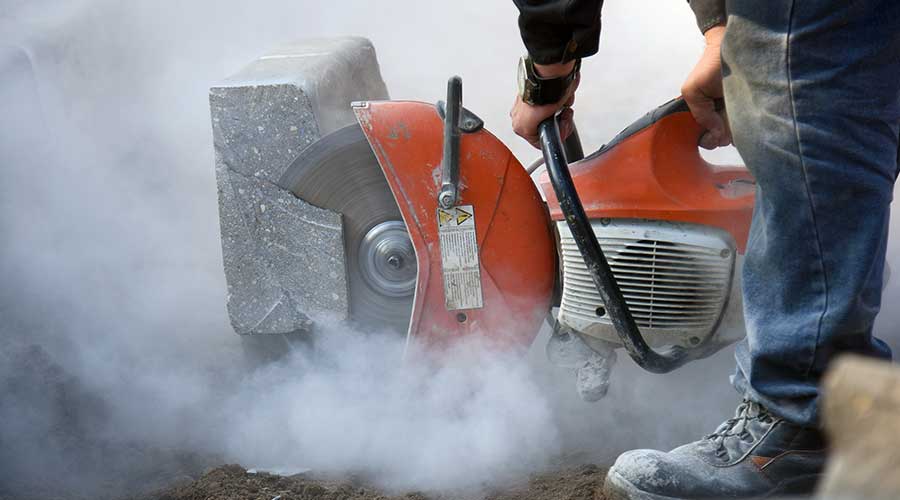Effective Patient Safety Practices in Hospital Renovations

Before a renovation project can begin, designers need to consider the risks of having patients in house.
The healthcare industry is constantly evolving, but oftentimes the facilities don’t match the innovations that are taking place on the medical side. Interiors are quickly becoming outdated, potentially turning off patients as it appears that they aren’t up to date. Because of this, more companies are deciding to renovate their spaces to better reflect the advancements that they are making in the care they offer.
However, renovations can pose a serious set of challenges. Hospitals don’t have the luxury of shutting down for a lengthy period of time to undergo construction. With patients, visitors and staff in the building, it is up to designers to navigate a renovation project without compromising the health and safety of all building occupants. Healthcare Facilities Today recently spoke with Ryan Ramsey, senior medical planner, Perkins&Will and Kyle Raschkow, healthcare market lead and senior project executive of BNBuilders on how designers can approach a renovation project with safety in mind.
HFT: How do you conduct risk assessments specific to patient safety during construction and renovation projects? What are the key risks you identify and address for patients during these projects?
Kyle Raschkow: When conducting risk assessments, the first thing we do is fill out pre-construction risk assessments and then Infection Control Risk Assessments (ICRA) for acute care renovation projects. At a minimum, we assess construction activities that might impact existing egress, smoke compartment breaches, medical gas interruptions, fire and sprinkler alarm disablement and critical branch power interruptions. The severity of the risk will determine the mitigation procedures required. This could include measures like full-time fire watch, temporary power and medical gas, and in certain situations, temporary relocation of patients to other areas of the hospital until the risk is mitigated.
Ryan Ramsey: Throughout the construction phase, the design team continues weekly interdisciplinary user meetings with topics focused on aligning current patient and staff operations with upcoming construction schedule trades. Making sure department and facility leadership are aware of the construction schedule is critical to minimizing safety risks, especially in renovation work where we consider all adjacent departments.
HFT: How do you integrate patient safety into the design phase of the project?
Ramsey: From the beginning of any project, our team creates design solutions with patient safety consideration at the forefront. We work hand in hand with the entire clinical team through a series of integrated design events to develop patient care spaces, which eventually become full-scale mockups and simulations for patient safety. Over the course of the design phase, we also assist in creating a site specific Functional Narrative document, which the Department of Health (DOH) will review, paying careful attention to sections focused on patient safety, emergency preparedness, and infection control and prevention. In design-build or design-assist project deliveries, we prioritize reviewing draft ICRA/PICRA plans with the DOH during a Technical Assistance review call.
Raschkow: Having the general contractor on board during these planning efforts is paramount to ensuring that logistics planning is incorporated into the design documents appropriately. This will help to head off any logistical changes that might arise later if there is not involvement from the contractor during the planning phase.
HFT: How do you ensure compliance with healthcare regulations and standards related to patient safety during construction?
Raschkow: Pre-planning is key, and once an initial plan is developed, we are required to communicate it clearly and receive feedback from all the effected parties in the hospital, including the construction manager, charge nurse, hospital facilities, infection prevention team, safety and security group among others. The plan may also require approval from regulatory agencies like the DOH or accrediting entities like the Joint Commission or Det Norske Veritas (DNV) before work can begin, so having all approved documentation in place is critical to ensuring the hospital can quickly provide needed information during inspections.
HFT: What measures do you implement to prevent infection during construction activities?
Raschkow: We implement several measures to prevent infection, which are also verified daily by the completion of our ICRA checklists. These measures include making sure our sticky mats are changed out regularly, modular containment walls with anti-rooms are sealed appropriately, negative air pressure consistently meets requirements while being measured by notifiable manometers, and negative air machines are tested and certified. Additionally, in certain critical environments where hazardous material is removed, air monitoring by a certified industrial hygienist may be required.
Mackenna Moralez is the associate editor of the facilities market.
The post "Effective Patient Safety Practices in Hospital Renovations" appeared first on Healthcare Facilities Today

